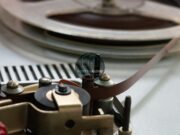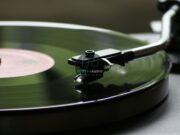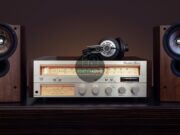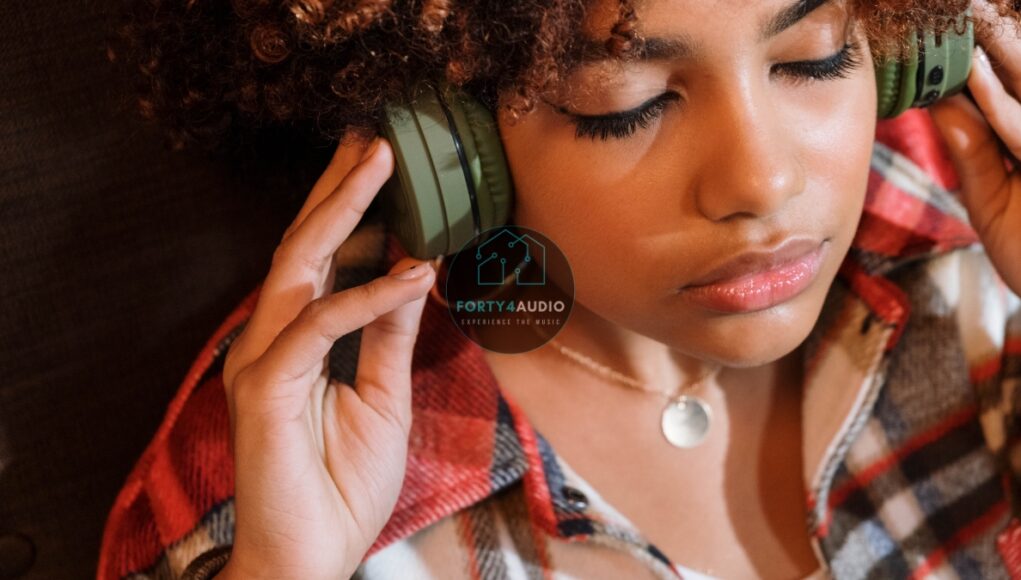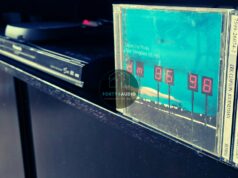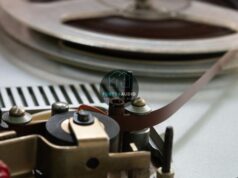Best Wireless Headphones for Audiophiles – Comfort, Sound Quality, and Features Compared
Wireless headphones have come a long way. What once felt like a compromise for convenience has evolved into a serious contender for audiophiles who crave both freedom and fidelity. With advancements in Bluetooth codecs, driver technology, and battery efficiency, the gap between wired and wireless is narrowing – and for many, it’s already closed.
But not all wireless headphones are created equal. For those who care deeply about sound – not just hearing it, but feeling it – the right pair of headphones can transform a moment into a memory. This guide is for those listeners. Whether you’re rediscovering your favorite albums or exploring new sonic territory, we’ll help you find the best wireless headphones that deliver on comfort, sound quality, and features – without compromise.
What Makes a Headphone Audiophile-Grade
The term audiophile gets thrown around a lot, but in this context, it means something specific: a listener who values accurate, immersive, and emotionally resonant sound. Audiophile headphones aren’t about exaggerated bass or artificial enhancements – they’re about clarity, balance, and detail.
Key Specs That Matter
When evaluating wireless headphones for audiophile use, here’s what to look for:
- Driver Type: Dynamic drivers are common, but planar magnetic drivers – once exclusive to wired models – are now appearing in wireless designs. These offer exceptional detail and low distortion.
- Frequency Response: A wider range doesn’t always mean better sound, but it can indicate a headphone’s ability to reproduce subtle nuances.
- Impedance and Sensitivity: While less critical in wireless models (since the amp is built-in), these still affect how the headphones handle dynamics and volume.
- Bluetooth Codecs: This is where things get interesting.
Lesser-Known Trivia
- Planar Magnetic Goes Wireless: Audeze’s Maxwell is one of the first wireless headphones to feature planar magnetic drivers – a technology prized for its speed and accuracy.
- Codec Compatibility Is a Two-Way Street: LDAC and aptX HD can transmit near-lossless audio, but only if both your headphones and playback device support the same codec. Many users don’t realize their phone may default to SBC – the lowest-quality codec – unless manually changed.
- Hi-Res Audio Over Bluetooth: LDAC can transmit up to 990 kbps, which is technically higher than CD quality. However, real-world performance depends on signal strength and interference.
Comfort Is the Unsung Hero of Long Listening Sessions
Sound quality gets the spotlight, but comfort is what keeps you listening. A headphone can sound incredible, but if it pinches your head or overheats your ears, it’s going back in the box.
Materials That Make a Difference
- Memory Foam: Conforms to your head shape and provides a snug seal, improving both comfort and passive noise isolation.
- Protein Leather: A synthetic alternative to real leather that’s soft and durable, though it can get warm during long sessions.
- Velour: Breathable and soft, but doesn’t isolate sound as well – better for quiet environments.
Design Considerations
- Weight Distribution: Heavier headphones can still feel light if the weight is evenly distributed across the headband.
- Clamping Force: Too tight, and you’ll feel pressure. Too loose, and you’ll lose seal and bass response.
- Ear Cup Shape: Oval cups tend to fit more naturally around the ear, while round cups can cause pressure points.
Trivia That Might Surprise You
- Aerospace-Grade Materials: Some high-end models use aluminum or magnesium alloys to reduce weight without sacrificing durability.
- Hidden Adjustments: Certain headphones, like the Focal Bathys, include micro-adjustable sliders inside the headband for a custom fit – a detail often missed in reviews.
- Ear Pad Depth Affects Soundstage: Deeper pads can create a more spacious sound by increasing the distance between your ear and the driver.
Wireless Sound Quality Compared to Wired
Let’s address the question that’s on every audiophile’s mind: can wireless headphones really match the sound quality of wired ones?
The short answer: they’re getting close – and in some cases, they’re already there.
Understanding Bluetooth Codecs
- SBC: The default codec for most Bluetooth devices. It’s functional but compressed.
- AAC: Preferred by Apple devices. Better than SBC, but not ideal for high-res audio.
- aptX / aptX HD / aptX Adaptive: Qualcomm’s family of codecs, offering improved bitrates and lower latency.
- LDAC: Developed by Sony, this codec supports up to 990 kbps and is widely considered the gold standard for wireless Hi-Fi.
- LHDC: A newer codec with similar performance to LDAC, but less widely supported.
Built-In DACs and Amps
Wireless headphones include their own digital-to-analog converters (DACs) and amplifiers. This means the manufacturer controls the entire signal chain – which can be a good thing. It allows for precise tuning and optimization.
Trivia That Audiophiles Appreciate
- Analog Passthrough: Some wireless headphones, like the Audeze Maxwell, include a 3.5mm jack for wired listening – giving you the best of both worlds.
- Driver Placement Affects Soundstage: In some models, the drivers are angled slightly forward to mimic the way sound naturally enters your ears, enhancing spatial perception.
- Firmware Can Improve Sound: Brands like Sony and Sennheiser occasionally release firmware updates that tweak EQ curves or improve codec handling – a rare but welcome feature.
Features That Matter for Audiophile Wireless Headphones
When it comes to wireless headphones, features can either enhance your listening experience or get in the way. For audiophiles, the goal is to find features that support – not distract from – the music.
Active Noise Cancellation and Its Trade-Offs
Active Noise Cancellation (ANC) is a popular feature, but it’s not always a win for purists. While ANC can block out distractions, it can also introduce subtle changes to the sound signature.
- How It Works: ANC uses microphones to detect ambient noise and then generates an inverse sound wave to cancel it out.
- Impact on Sound: Some ANC systems slightly reduce dynamic range or introduce a faint hiss. Brands like Sony and Bose have refined their algorithms to minimize this, but it’s still something to consider.
Trivia:
- Tuning Compensation: Some manufacturers retune their headphones when ANC is active to preserve tonal balance. This is why the same headphone may sound different with ANC on versus off.
- Passive Isolation Still Matters: A well-sealed ear cup can block 20–30 dB of noise without any electronics – and without affecting sound quality.
Transparency Mode and Touch Controls
Transparency mode lets outside sound in, which is useful for conversations or staying aware of your surroundings. It’s especially helpful in urban environments or shared workspaces.
Touch controls are convenient, but they can be finicky. Some audiophiles prefer physical buttons for their reliability and tactile feedback.
Trivia:
- Bone Conduction Mics: A few high-end models use bone conduction sensors to improve voice clarity during calls – a feature borrowed from military headsets.
- Customizable Controls: Some headphones let you remap touch gestures or button functions via an app, allowing for a more personalized experience.
Battery Life and Charging
Battery life is often a trade-off with sound quality. Larger drivers and high-bitrate codecs consume more power, so manufacturers must balance performance with endurance.
- Average Battery Life: Most premium wireless headphones offer 20–40 hours of playback.
- Fast Charging: Many models now provide several hours of use from just 10–15 minutes of charging.
Trivia:
- Battery Chemistry Affects Sound: As batteries age, their voltage output can fluctuate slightly, which may affect amplifier performance in some headphones.
- USB DAC Mode: Some headphones can be used as wired USB DACs when plugged into a computer – bypassing Bluetooth entirely for lossless playback.
Best Wireless Headphones for Audiophiles Compared
Here’s a curated comparison of the top wireless headphones that meet audiophile standards in 2025. Each model has been selected for its balance of sound quality, comfort, and meaningful features.
| Model | Sound Quality | Comfort | Features | Price |
|---|---|---|---|---|
| Focal Bathys | Exceptional clarity, wide soundstage, LDAC support | Lightweight, premium materials | ANC, USB-DAC mode, app EQ | $$$$ |
| Sony WH-1000XM5 | Warm, detailed, customizable EQ | Plush ear pads, light clamping force | LDAC, ANC, adaptive sound control | $$$ |
| Sennheiser Momentum 4 | Balanced tuning, strong bass control | Long-wear comfort, breathable pads | aptX Adaptive, ANC, 60-hour battery | $$$ |
| Audeze Maxwell | Planar magnetic drivers, studio-grade detail | Heavier build, firm fit | LDAC, analog input, game/chat mix | $$$ |
| Bowers & Wilkins PX8 | Refined tuning, rich mids | Luxurious materials, snug fit | aptX Adaptive, ANC, voice assistant | $$$$ |
Notes:
- Focal Bathys stands out for its USB-DAC mode, allowing true lossless playback when wired.
- Audeze Maxwell is the only model here with planar magnetic drivers – a rare find in wireless headphones.
- Sennheiser Momentum 4 offers the best battery life in its class without sacrificing sound quality.
Buying Tips for Audiophiles Choosing Wireless Headphones
Choosing the right wireless headphones isn’t just about specs – it’s about synergy. Here are some practical tips to help you make the right call.
Match Your Codec to Your Device
If your phone or music player doesn’t support LDAC or aptX HD, you won’t benefit from those codecs – no matter how good the headphones are. Check your device’s Bluetooth settings or manufacturer specs.
Trivia:
- Android 8.0+ allows users to manually select Bluetooth codecs in developer settings – a hidden gem for audiophiles.
Prioritize Sound Signature Over Brand
Every headphone has a unique tuning. Some lean warm and bassy, others are bright and analytical. Choose the one that matches your taste and music library.
- Warm Tuning: Great for jazz, soul, and classic rock.
- Neutral Tuning: Ideal for classical, acoustic, and studio monitoring.
- V-Shaped Tuning: Emphasizes bass and treble – popular for pop and EDM.
Comfort Is a Long-Term Investment
Even the best-sounding headphones are useless if you can’t wear them for more than 30 minutes. Look for models with adjustable headbands, replaceable ear pads, and breathable materials.
Trivia:
- Ear Cup Shape Affects Bass: Oval cups tend to provide a better seal, which enhances low-end response – especially important for genres like hip-hop or electronic.
Rediscovering Music Through Wireless Hi-Fi
For audiophiles, music is more than entertainment – it’s a personal archive of emotion, memory, and movement. The transition to wireless headphones doesn’t mean leaving that behind. In fact, with the right gear, it can deepen the connection.
The Emotional Impact of Sound Quality
When sound is reproduced with precision, it evokes more than just appreciation – it triggers memory. A well-tuned headphone can bring out the breath in a vocal performance, the texture of a bowed string, or the subtle decay of a cymbal. These details matter. They’re what turn listening into experiencing.
Wireless headphones have reached a point where they can deliver this level of detail. Thanks to advanced codecs and integrated DACs, the fidelity gap is shrinking – and for many listeners, it’s already imperceptible.
Trivia:
- Psychoacoustics in Tuning: Some headphone manufacturers use psychoacoustic models to tune their drivers – optimizing for how the human brain perceives sound, not just how it measures on paper.
- Memory Recall Through Music: Studies show that high-fidelity playback can enhance emotional recall, making music a more powerful trigger for memory than low-quality audio.
The Role of Soundstage and Imaging
Soundstage refers to the perceived space in which music exists. Imaging is the ability to place instruments and vocals within that space. Together, they create immersion.
Wireless headphones with angled drivers, deep ear cups, and precise tuning can replicate the spatial qualities of live performance – even without wires.
Trivia:
- Virtual Surround Processing: Some wireless headphones include DSP algorithms that simulate surround sound. While purists may prefer unprocessed audio, these features can enhance cinematic or gaming experiences.
- Driver Alignment: A few models use asymmetrical driver placement to mimic the natural angle of the ear canal – improving imaging without artificial processing.
Genre Matching and Personal Taste
Not all headphones suit all genres. Some are tuned for warmth and richness, others for clarity and speed. Matching your headphone to your musical preferences can make a significant difference.
- Jazz and Classical: Look for headphones with wide soundstage and neutral tuning.
- Rock and Indie: A slightly warm signature with strong midrange presence works well.
- Electronic and Hip-Hop: Emphasized bass and crisp highs enhance rhythm and energy.
Trivia:
- EQ Customization: Many wireless headphones now offer app-based EQ settings. Some even allow parametric EQ – giving users control over specific frequency bands.
- Genre-Specific Presets: Brands like Sony and Sennheiser include genre-based EQ presets, but manual tuning often yields better results for discerning listeners.
Join the forty4 Audio Community
If music is your refuge, your inspiration, or your fuel – you’re not alone. At forty4 Audio, we believe sound is more than a signal. It’s a story. A memory. A movement.
Whether you’re upgrading your gear, exploring new genres, or simply chasing that perfect moment of sonic clarity, we invite you to continue your journey with us.
Here’s how to stay connected:
- Explore curated guides and gear reviews tailored for passionate listeners.
- Share your setup and discoveries with fellow audiophiles.
- Get early access to product insights, listening tips, and exclusive content.
Because music deserves more than convenience – it deserves connection.
Join the movement at forty4audio.com and rediscover what wireless Hi-Fi can truly be.




